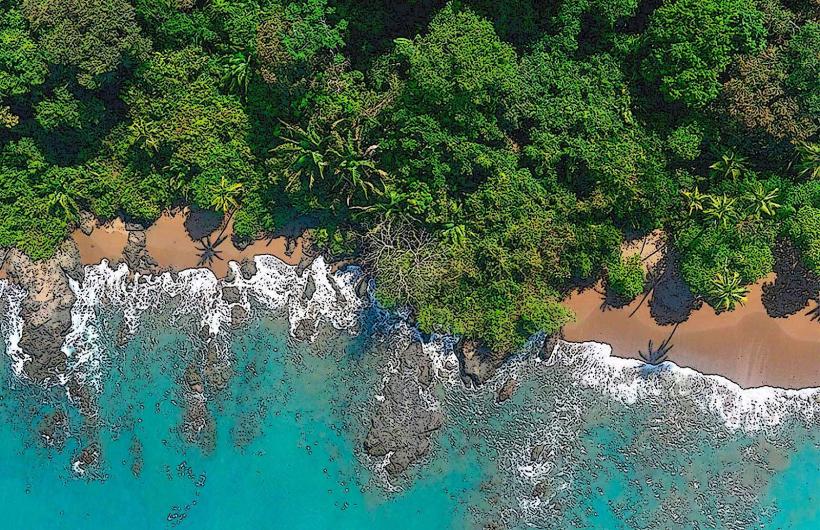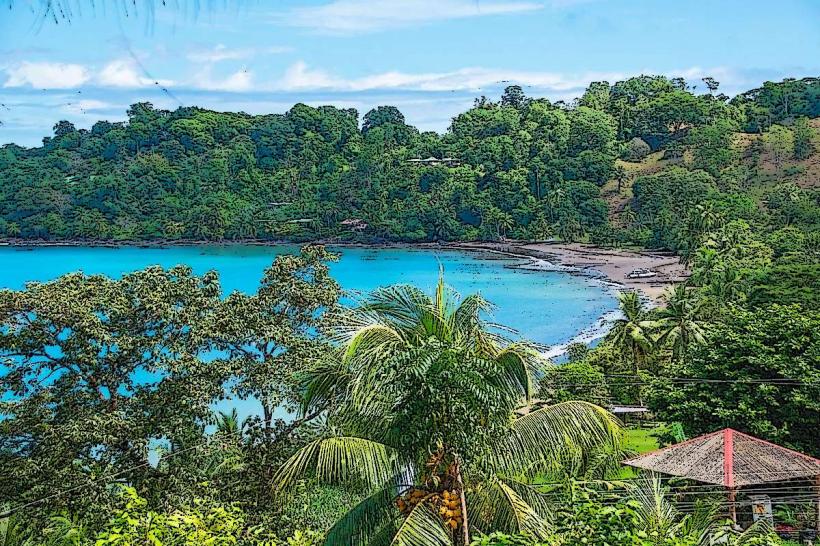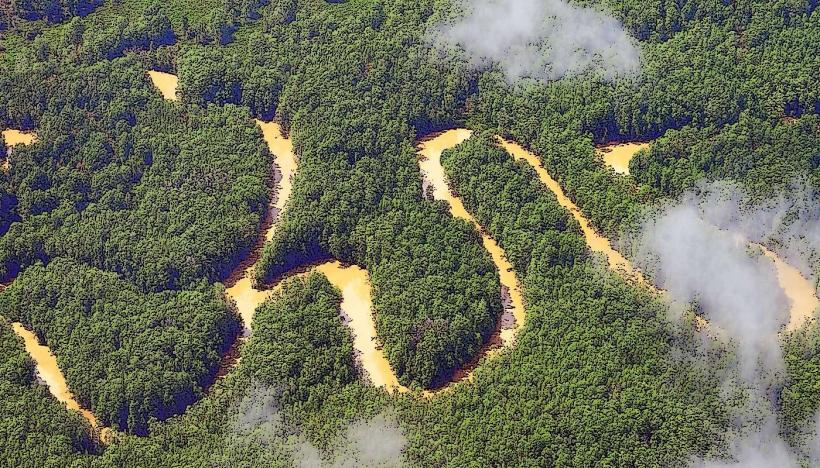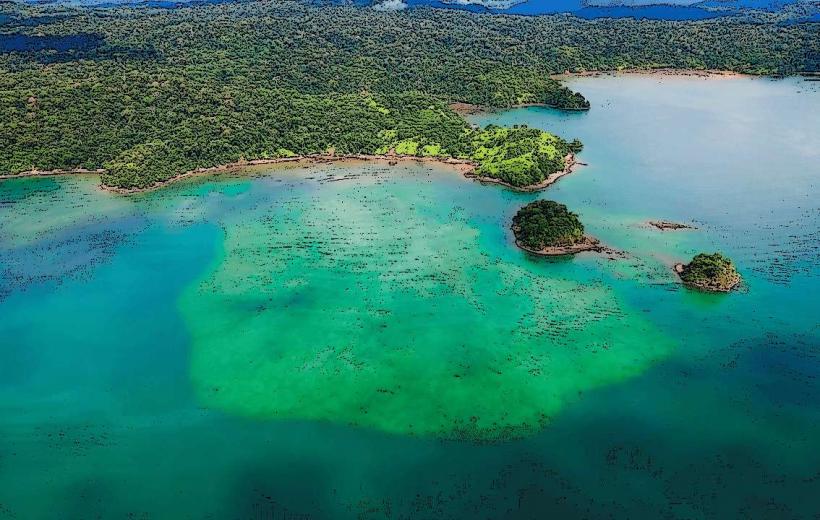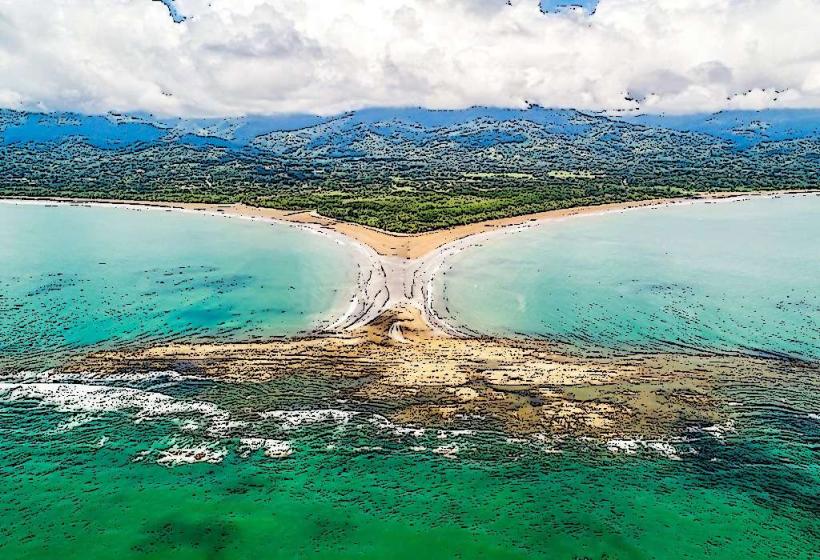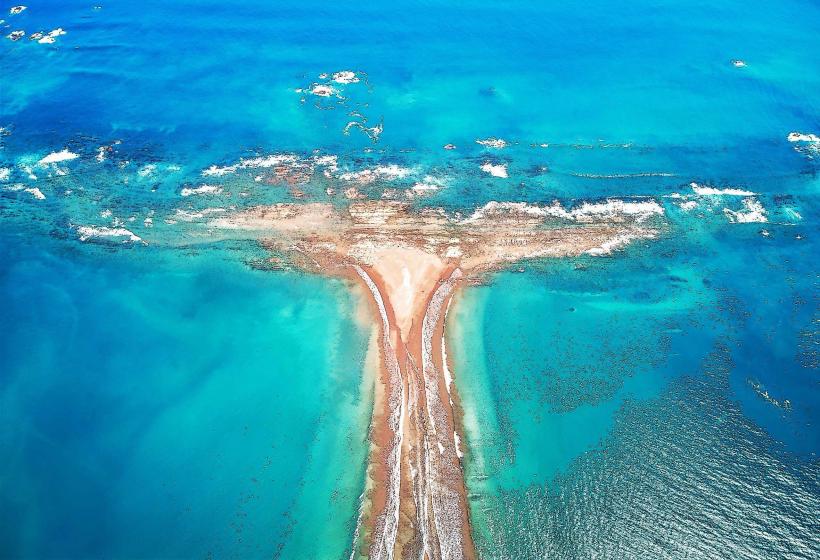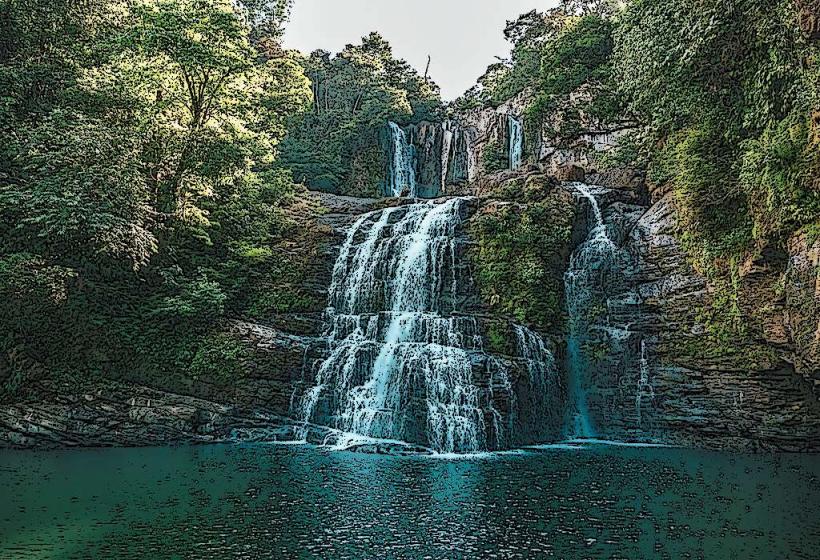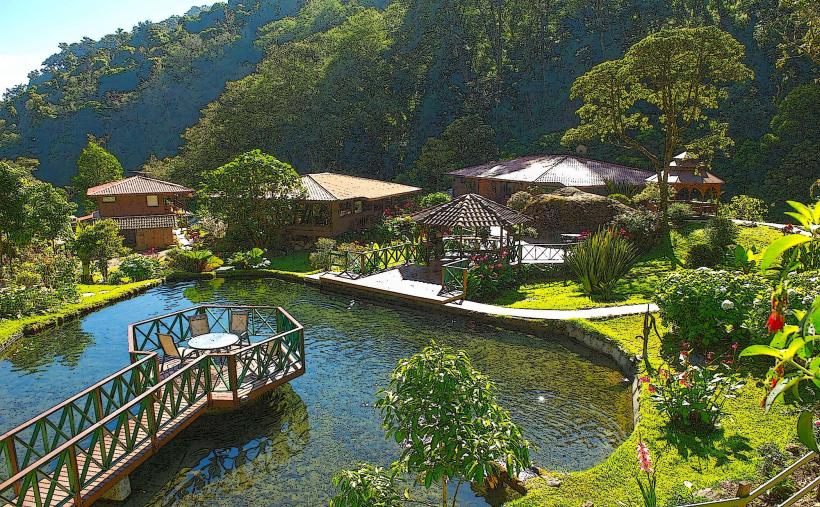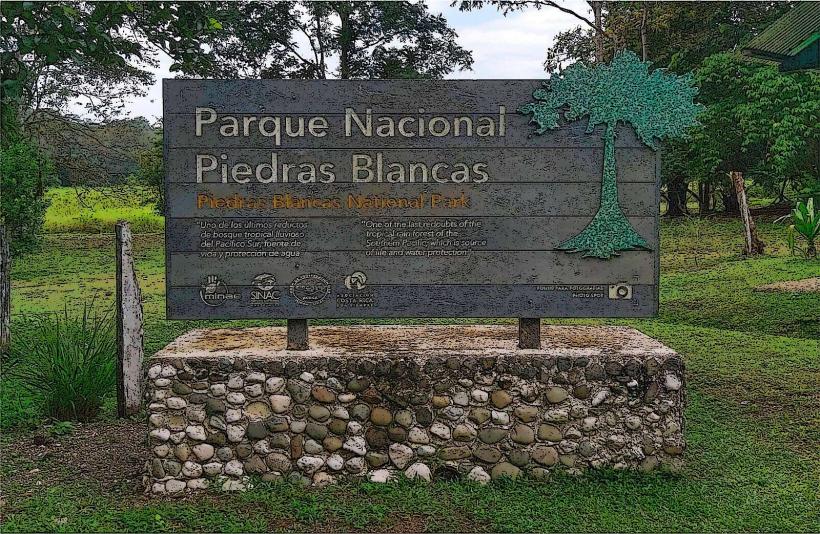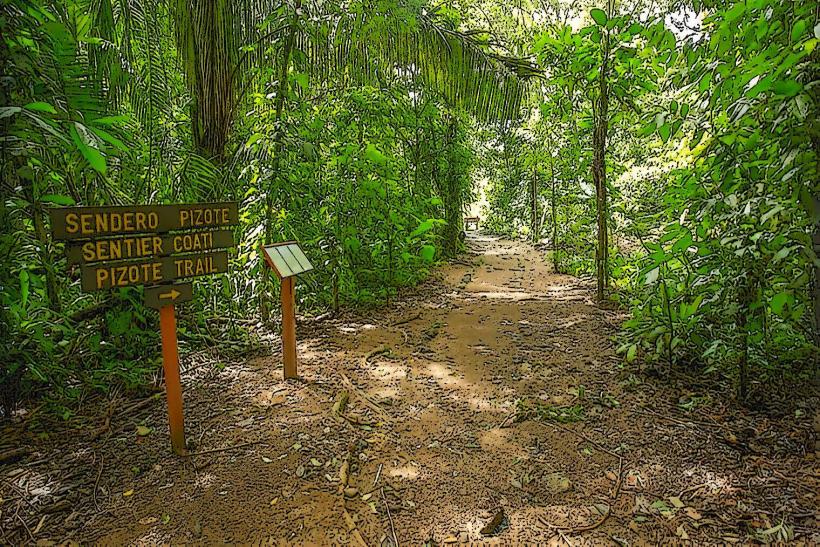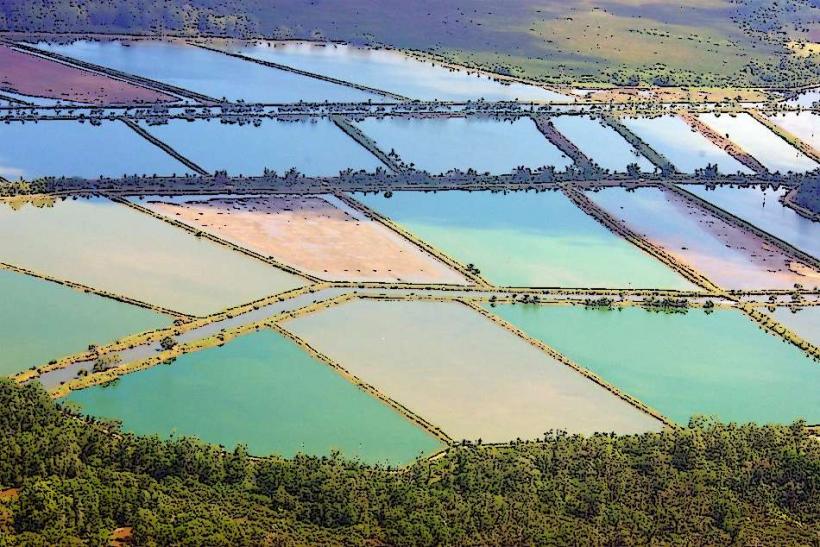Information
Landmark: Marino Ballena National ParkCity: Zona Sur
Country: Costa Rica
Continent: North America
Marino Ballena National Park is a protected marine and coastal park located on the southern Pacific coast of Costa Rica, specifically in the Osa Peninsula region, within Puntarenas Province. Established in 1989, the park is renowned for its rich biodiversity, marine life, and the whale-shaped formation of its coastline, which is a prominent feature. The park is one of the most significant protected areas for marine conservation in Costa Rica, particularly due to its role in preserving humpback whale populations and offering habitat to numerous species of marine life, including dolphins, sea turtles, and fish.
Geography and Location
- Location: Marino Ballena National Park is situated along the Pacific coastline in the southern part of Costa Rica, in the Osa Peninsula region. The park covers an area that spans both land and sea, extending from the town of Uvita to Dominical, and includes both marine and terrestrial zones.
- Size: The park encompasses around 5,400 hectares (13,350 acres), with 3,000 hectares (7,410 acres) dedicated to the marine environment and the remainder to the coastal forests and mangrove habitats.
- Whale Tail: The park’s most iconic feature is the Whale Tail (Cola de Ballena), a sandbar that forms a natural whale-shaped formation visible from the air. This formation creates a unique and scenic bay and is a popular area for visitors to explore.
Ecological Importance
Marino Ballena National Park is home to a wide array of ecosystems, including tropical rainforests, mangrove forests, coral reefs, and seagrass beds, which all contribute to the region’s incredible biodiversity.
Marine Ecosystems
Whale Watching:
- The park is a whale sanctuary, and it plays a crucial role in the conservation of humpback whales, which migrate through the region twice a year. The whales typically arrive in December to April for the northern migration and in August to November for the southern migration. During these months, tourists can spot humpback whales and other species of cetaceans, such as dolphins.
- Marino Ballena is recognized as one of the world’s best locations for whale watching, particularly because of its clear waters and proximity to the whales’ migratory path.
Coral Reefs and Marine Life:
- The park has rich marine biodiversity, including coral reefs, which support diverse species of fish, sharks, moray eels, and sea turtles. The coral reefs are a haven for divers and snorkelers.
- In addition to whales, the waters of Marino Ballena are home to other marine mammals, such as dolphins, sea lions, and manatees. The park’s waters are also critical for feeding and breeding for several species of sea turtles, including the olive ridley and hawksbill turtles.
Seagrass Beds:
- The park contains seagrass beds, which provide a habitat for various marine creatures, such as sea turtles and manatees. These seagrasses are vital for the ecosystem as they help with the filtration of water and the stabilization of the coastline.
Mangrove Ecosystems:
- Along the coast, the park also includes vital mangrove ecosystems. Mangroves act as nurseries for fish and other marine life and help prevent coastal erosion.
Land-Based Ecosystems
In addition to its marine zones, Marino Ballena National Park also protects several terrestrial ecosystems, including coastal forests, wetlands, and rainforests that are home to a variety of land-based species.
- Rainforests:
- The park features tropical rainforests that are rich in biodiversity. Visitors may spot animals such as howler monkeys, capuchin monkeys, anteaters, sloths, and various bird species like scarlet macaws and toucans.
- Coastal Forests and Wetlands:
- The park includes protected wetlands and coastal forests that provide shelter for species such as iguanas, frogs, and reptiles, along with numerous species of migratory birds.
Activities in Marino Ballena National Park
The park offers a wide range of outdoor activities, making it an ideal destination for nature lovers and adventure seekers:
Whale Watching:
- The highlight of a visit to Marino Ballena National Park is the opportunity to observe humpback whales in their natural habitat. Whale watching tours, which typically run during the migratory seasons, provide boat rides to see these majestic creatures up close, along with other marine mammals like dolphins.
Snorkeling and Scuba Diving:
- Snorkeling and scuba diving are popular activities in Marino Ballena National Park. The park’s coral reefs are home to an abundance of marine species, and divers can explore these reefs, seeing fish, sea turtles, manta rays, and moray eels. The clear waters make for excellent underwater visibility.
Kayaking and Paddleboarding:
- Kayaking and stand-up paddleboarding are excellent ways to explore the coastline, mangroves, and the calm waters of the park. Visitors can rent kayaks and paddle through the tranquil, sheltered waters, with opportunities to observe wildlife along the way.
Beach Activities:
- The park is home to several pristine beaches, such as Playa Uvita, Playa Arco, and Playa Colonia, which are perfect for relaxing, swimming, or picnicking. The beaches are less crowded than those in other areas of Costa Rica, offering a serene atmosphere.
Hiking:
- The park has a few hiking trails that wind through coastal forests, mangroves, and rainforests. These trails provide opportunities to spot wildlife, including monkeys, sloths, and birds, while taking in the park’s diverse ecosystems.
Turtle Watching:
- Although not as well-known as the turtle nesting sites on the Caribbean coast, Marino Ballena National Park is an important nesting area for several species of sea turtles. Tours are available to observe the nesting and hatching process of olive ridley and hawksbill turtles.
Conservation and Environmental Importance
Marino Ballena National Park plays a crucial role in marine and terrestrial conservation, protecting critical habitats for endangered species and providing a sanctuary for migratory whales and turtles. The park is also a vital part of Costa Rica's broader network of protected areas, ensuring the preservation of vital coastal and marine ecosystems.
- Whale Conservation: The park is part of the whale migration corridor, which is essential for the conservation of humpback whales and other cetacean species. It is a designated whale sanctuary, providing a protected environment for these species to calve and raise their young.
- Marine Conservation: The coral reefs, seagrass beds, and mangroves in the park provide essential habitats for a variety of marine species, contributing to the health of the region’s ecosystem.
- Environmental Education: The park also promotes environmental education and awareness through educational programs, nature tours, and conservation efforts that aim to engage the local community and visitors in protecting the park’s resources.
Access and Practical Information
- Location: Marino Ballena National Park is located near the town of Uvita, approximately 180 kilometers (112 miles) south of San José, the capital of Costa Rica. It is about a 3-4 hour drive from the capital.
- Access: The park is accessible by road, and visitors can drive from the coastal towns of Dominical or Uvita to the park entrance. It is also accessible by boat for whale watching or scuba diving excursions.
- Best Time to Visit: The best time to visit the park is during the whale migration seasons, which are typically from December to April for the northern migration and from August to November for the southern migration. The dry season (December to April) is also ideal for enjoying the park’s beaches and outdoor activities, while the rainy season (May to November) offers lush, green landscapes and fewer tourists.
- Entrance Fees: There is an entrance fee to access the park, which helps fund its conservation efforts. Visitors can purchase tickets at the park’s entrance, and guided tours are available for an additional fee.
Conclusion
Marino Ballena National Park is a stunning coastal gem in southern Costa Rica, offering visitors an opportunity to experience the country’s natural beauty, rich marine life, and diverse ecosystems. Whether you’re interested in whale watching, snorkeling, diving, or simply enjoying the serene beaches, the park offers a wealth of activities to connect with nature. Its protected status ensures the preservation of important habitats for whales, sea turtles, dolphins, and countless other species, making it a crucial area for conservation in Costa Rica.

